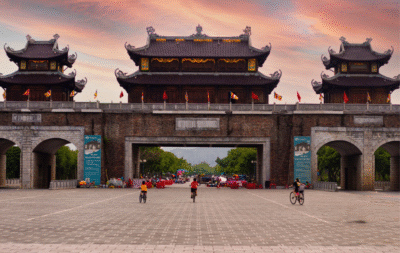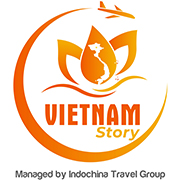The mooncake, far more than just a delectable Chinese pastry, is a profound cultural icon. It embodies the spirit of the Mid-Autumn Festival, known in Vietnam as Tết Trung Thu, a celebration deeply cherished across East and Southeast Asia, including Vietnam. If you’ve ever stepped into an Asian bakery or grocery store during autumn, especially around the 15th day of the 8th month in the Chinese lunar calendar (for instance, September 17, 2024), you’ve likely seen these intricately decorated pastries. Mooncakes are not merely a seasonal treat; they are a vibrant symbol of family reunion, a reflection of rich cultural heritage, and a delicious way to express good wishes. This guide delves into the fascinating world of mooncakes, exploring their definition, historical roots, diverse varieties, and profound cultural significance, offering a comprehensive understanding for travellers to Vietnam eager to experience this beloved tradition.
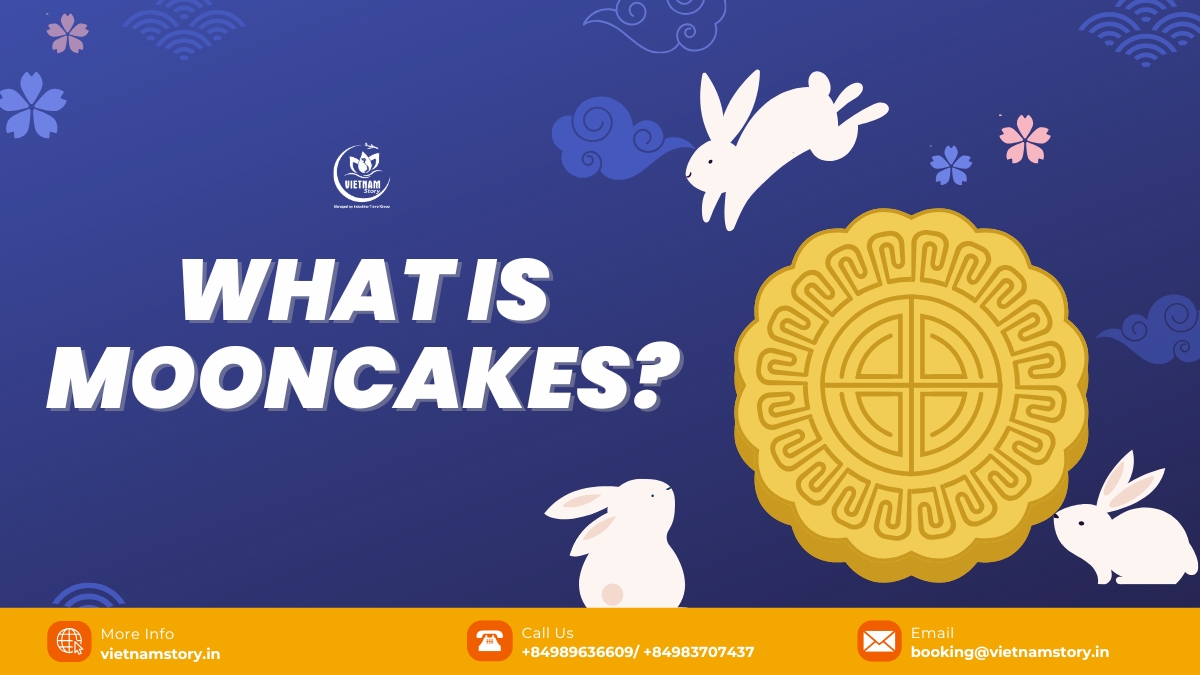
What Is Mooncake? Unpacking Its Core Characteristics
So, what exactly is a mooncake? At its heart, it’s a rich, dense pastry, often fitting in the palm of your hand, designed to be shared. Its features are steeped in tradition and symbolism.
The Signature Shape and Its Meaning
Traditionally, mooncakes are round, meticulously crafted to mirror the full harvest moon. This round shape is deeply symbolic in Chinese culture and adopted in Vietnam, representing completeness, wholeness, and the cherished ideal of family unity. Some mooncakes may also be square, but the circular form remains the most iconic, symbolizing bliss and luck. Families coming together during Tết Trung Thu is a core theme, and the mooncake embodies this gathering.
A Tale of Two Parts: The Crust and Filling
A mooncake consists of two main components: an outer crust and a dense inner filling. The crust can vary, from the golden-brown baked type to the soft, chewy no-bake versions. The richness comes from the filling, which can be either sweet or savory, or sometimes a delightful combination of both.
Classic Fillings: A Taste of Tradition
Traditional mooncake fillings are a testament to culinary heritage. Common sweet fillings include:
- Sacred lotus seed paste (Lian Rong): A smooth, rich, and subtly sweet paste, considered a delicacy.
- Red bean paste (Hong Dou Sha): Sweetened and mashed adzuki beans, offering a distinct, earthy sweetness.
- Mixed nuts and seeds: A delightful medley that can include walnuts, almonds, pumpkin seeds, and sesame seeds, often bound with a sweet syrup.
While savory fillings are less common universally, options like salted ham or seasoned minced pork can be found, especially in certain regional styles.
The Golden Center: The Symbolic Salted Egg Yolk
A hallmark of many traditional mooncakes is the inclusion of one or more whole salted duck egg yolks at the center. This golden orb is not just for flavor; it beautifully symbolizes the full moon, reinforcing the pastry’s connection to the festival and its celestial namesake. Some luxurious versions might even contain two or four yolks!
More Than Just a Treat: The Cultural Significance of Mooncakes
Mooncakes are central to the Mid-Autumn Festival, carrying layers of meaning that go beyond their taste.
A Symbol of Family Reunion and Togetherness
The roundness of the mooncake and the full moon it emulates are powerful symbols of completeness and togetherness. The festival is a time for families to gather, share stories, and reinforce bonds, and the mooncake is an integral part of this tradition. As Sijia Yao, Assistant Professor of Chinese Language and Culture, notes, “Mooncakes take the shape of a full moon that represents family reunion, happiness and completeness.”
The Heart of Mid-Autumn Festival (Tết Trung Thu) in Vietnam
In Vietnam, Tết Trung Thu is often celebrated as a children’s festival, with lanterns, parades, and lion dances. Mooncakes, known as “Bánh Trung Thu,” are a highlight. They are exchanged between family members, friends, and business associates, signifying respect, gratitude, and good wishes. It’s a time of joy and community, with mooncakes playing a delicious central role.
The Art of Gifting Mooncakes
Gifting mooncakes is a deeply ingrained tradition. Elaborately decorated boxes of mooncakes are exchanged as tokens of esteem and generosity. This act of giving strengthens social and familial ties, conveying wishes for prosperity and happiness.
A Journey Through Time: The Ancient Roots and Fascinating History
The story of the mooncake is ancient, with origins dating back thousands of years.
From Ancient Chinese Rituals to Festive Staple
The practice of making and eating mooncakes began in China. Initially, these were offerings to the moon deity during harvest festivals, expressing gratitude for agricultural bounty. Over centuries, these simple offerings evolved into the intricate pastries we know today, spreading throughout East and Southeast Asia, including Vietnam, where they became integrated into local customs.
A Legendary Role: Mooncakes and the Yuan Dynasty
A fascinating, though perhaps apocryphal, piece of mooncake lore involves their alleged role in a historic uprising. Legend has it that during the Yuan Dynasty (13th-14th centuries) in China, messages outlining plans for revolt against the Mongol rulers were hidden inside mooncakes. These special “message mooncakes” were then distributed among supporters, contributing to the dynasty’s overthrow. This tale adds a layer of intrigue to the pastry’s rich history, showcasing it as a potential rare instrument of rebellion.
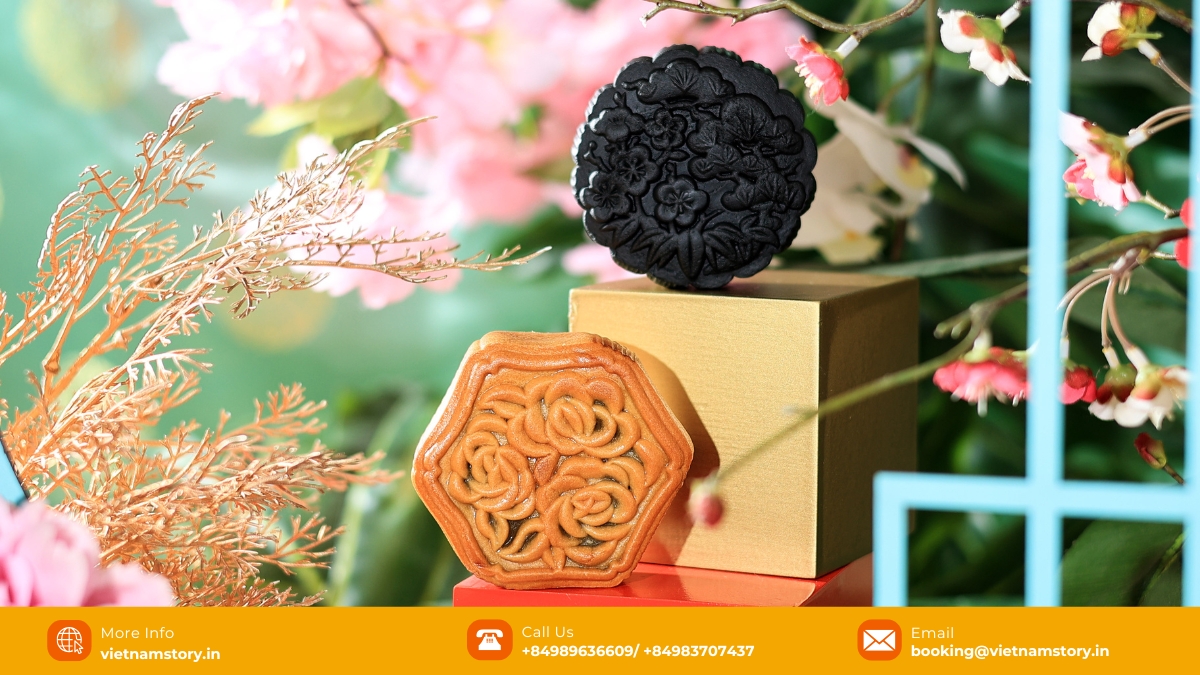
A World of Flavors: Exploring Diverse Mooncake Types in Vietnam and Beyond
Mooncakes are not a monolith; they come in a delightful array of types, reflecting regional tastes and culinary innovation. Just as understanding what is pho offers a savory glimpse into the nation’s soul, exploring mooncake varieties reveals another facet of Vietnam’s rich food culture. In Vietnam, you’ll primarily encounter two beloved styles:
Traditional Baked Mooncakes (Bánh Nướng): The Timeless Classic
These are the most widely recognized mooncakes in Vietnam, known as “Bánh Nướng.” They feature a golden-brown, slightly glossy baked crust, often made with wheat flour, golden syrup, and oil, giving it a distinctive texture and sheen. The fillings are typically robust, with popular choices being lotus seed paste, mixed nuts, and the indispensable salted egg yolk. Their surfaces are usually imprinted with intricate patterns or Chinese characters symbolizing good fortune or the bakery’s name.
Modern Delight: Snowy Mooncakes (Bánh Dẻo)
A delightful contrast to their baked counterparts, “Bánh Dẻo” or snowy mooncakes are a no-bake Vietnamese specialty. They have a soft, chewy, and often translucent crust made from glutinous rice flour (similar to mochi), which is typically white but can be colored. The fillings are generally lighter and sweeter, often featuring mung bean paste, coconut, or fruit pastes. These are served chilled and offer a refreshing alternative.
Beyond the Usual: Rare and Exotic Variations
The world of mooncakes is ever-evolving. While traditional types hold strong, chefs and bakeries continually experiment. You might encounter innovative fillings such as rich durian paste (a beloved fruit in Southeast Asia), creamy taro paste, or even luxurious edible bird’s nest, a delicacy made from swiftlet saliva. Modern interpretations also include ice cream mooncakes, often with a mango sorbet core mimicking the egg yolk, and visually stunning crystal jelly mooncakes made with clear gelatin and embedded fruits or flowers. These showcase culinary creativity and cater to contemporary palates.
Regional Styles: A Glimpse
While Vietnam has its distinct Bánh Nướng and Bánh Dẻo, it’s worth noting that mooncake traditions vary across regions with Chinese influence. Cantonese-style mooncakes are famous for their thin, tender crusts and often feature multiple egg yolks. Beijing-style mooncakes tend to have a thicker, flakier crust. Suzhou-style is known for its very flaky, layered pastry and often savory fillings.
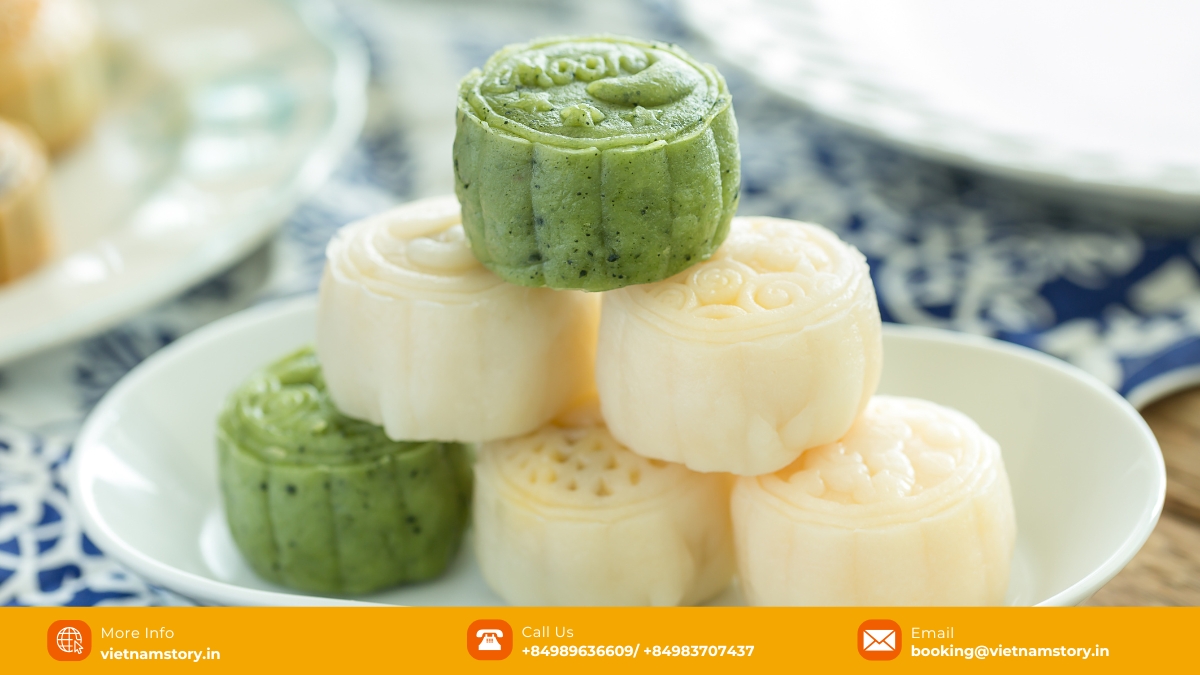
The Art of Creation: How Mooncakes Are Made
Making mooncakes is a precise art, a skill often passed down through generations. Each component, from dough to filling, is carefully portioned and prepared.
Crafting the Dough and Rich Fillings
The dough for baked mooncakes typically involves flour, golden syrup (which gives the crust its color and texture), and oil. For snowy mooncakes, glutinous rice flour is mixed with sugar and liquid to form a pliable dough. Fillings are prepared separately, often cooked down to achieve the desired consistency and flavor intensity.
The Molder’s Touch: Intricate Designs and Symbolism
Once the filling is encased in the dough, the mooncake is pressed into a special mold. These molds are often works of art themselves, imprinting the pastry with beautiful patterns, auspicious characters (like “longevity” or “harmony”), or images of flowers, the moon, or mythical creatures. This decorative element adds to their symbolic value and visual appeal.
Baking to Perfection vs. No-Bake Wonders
Traditional mooncakes (Bánh Nướng) are baked until golden brown, a process that requires careful temperature control. Snowy mooncakes (Bánh Dẻo), on the other hand, are no-bake; their crust is typically steamed or simply prepared and chilled, allowing their delicate flavors and textures to shine.
Experiencing Mooncakes in Vietnam: A Treat for Travellers
For visitors to Vietnam, especially during the Mid-Autumn Festival (Tết Trung Thu), encountering mooncakes is an unmissable cultural experience. They are typically shared, cut into small wedges, and savored slowly, often accompanied by a cup of traditional Vietnamese tea, which helps to balance their richness. While tea is a classic pairing, many visitors also find joy in discovering other signature Vietnamese beverages; learning how to drink Vietnamese coffee, for example, can be another delightful part of your culinary journey. You’ll find them abundantly in markets, bakeries, and street stalls leading up to the festival. Trying both Bánh Nướng and Bánh Dẻo offers a delightful taste of Vietnamese tradition.
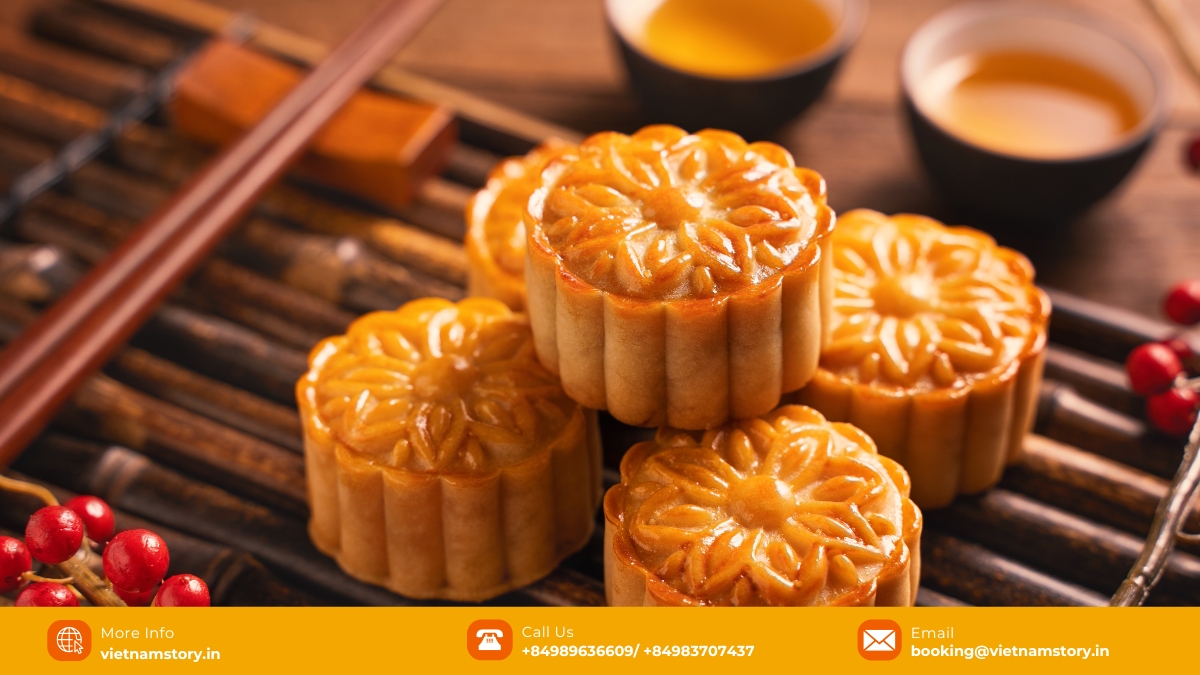
Conclusion: The Enduring Allure of the Mooncake
The mooncake, a seemingly simple pastry, is a profound symbol of culture, tradition, and connection in Vietnam and beyond. More than just a food item, it’s a delicious emblem of family reunion, a carrier of good wishes, and a celebration of the harvest moon. For travellers, especially those from India exploring Vietnam’s rich heritage, understanding and tasting mooncakes offers a unique and flavorful glimpse into the heart of Vietnamese celebrations. Whether you’re captivated by their intricate designs, rich fillings, or the stories they tell, mooncakes are an experience that will undoubtedly enrich your journey and leave you with sweet memories of Vietnam’s vibrant culture.


